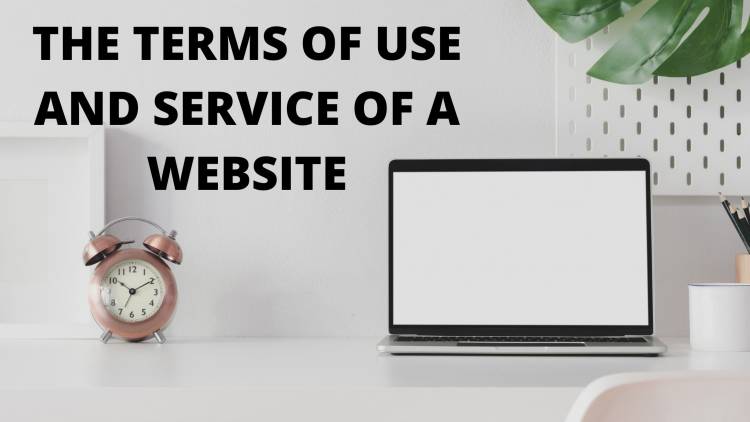What are the Legal Challenges faced by App Developers?
Today, everything is just a click away. The advent of mobile apps has transformed the way we access goods and services. With the consistent increase in the quantum of startups and innovative ideas, the challenges for these markets have also increased. Startups are often coupled with an online platform or an application for a far better approach and access than the traditional way. Apps such as Ola, Uber, Amazon, and Myntra have largely taken over the online market. The heat experienced by the market in the recent IPO for Nykka is another example of the flourishing startup and online market. The mobile app landscape has grown by leaps and bounds, opening up opportunities for developers and programmers. However, amid the excitement of creating innovative and user/friendly applications, mobile app developers face many legal concerns because these applications deal with user information. The fact that applications handle, process and store sensitive consumer information raises several l

Introduction
App development has, in recent years, become a hot bed for development in the cyber sector. This has come to light due to the huge penetration of smartphones, with increasingly better, more powerful specifications and the obvious continuous development of technology in general, the market for better quality apps has increased tremendously. Coders find that working on app development is more lucrative, easier and at the same time more challenging and interesting to work on. It has led to increasing ease of access for customers to their desired product, as well the manufacturers getting a wider base of customers. This, in turn, has helped the App Developers (“developers”) land lucrative contracts with companies, and start-ups both turning to the developers for their work.
App development process
- Project requirement discussion – the app development process begins with consultation and discussion regarding the need of the customer or the product.
- Business Insight & Estimation – finalizing the requirements, a team has to be built and a blueprint of the business plan is required to kick off the development process.
- Signing NDA – after finalizing the outlines of the business and app, it now requires protection of the said idea.
- Wire-framing of the app – now begins the designing and development part. The estimation of the development timeline and flaws in the system.
- UI/UX design – usability plays a huge part in the success of apps and a proper UI design helps attract users and have provide a better experience.
- App development – getting together the blueprints and designs is the next step for app development.
- QnA testing – corrections are made after a demo use with the help of user experience for the product.
- Launching the app – the final product now gets published on an app store.
- Post-production support – the production process does not cease after the launching of the app. The product feedbacks also help the developer update the app to better versions.
Legal issues while establishing an app
1. Confidentiality agreements – NDA or other required document helps keep the company’s secret to themselves by creating an obligation towards the parties to be faithful and true to the company. NDAs are legally binding documents that acknowledge a confidential relationship between the parties to maintain the secrecy of information. The parties involved may be the developers, producers, designers, partners, shareholders, employees, clients, or any other person required. In the app development business, it makes sure to prevent any illegal sharing of data, design, or software for any malpractice or development malware.
2. Intellectual property rights- intellectual property is a category that includes intangible creations of human intellect. It can relate to all stages of an app development process that is original. These intellectual properties can be protected by registering them under laws accepted for Copyright, Patent, or Trademark. These IP laws help mobile app developers and publishers to generate more income from their creations.
· Copyright - it protects original works of authorship- like mobile apps-by giving creators rights to control online access, reproduction, distribution, and adaptations. Mobile App Economy has developed over a $1.7 Trillion ecosystem. A copyright protects the artistic work, in this case, the source code, and the design of an app. Copyright is governed by The Copyright Act, 1957. The protection provided is for a period of 60years at a time.
· Patent – a patent works on protecting the methodology and procedure adopted for the development of the app. Patents are procured over new and innovative ideas that are non-obvious. There are three types of patents that are protected, utility, design, and plant. In India, Patents are protected under The Patent Act 1970. The protection provided is for a period of 20years at a time.
· Trademark - of the company helps keep the business authentic and original and is protected by The Trade Marks Act 1999. A trademark generates a fiduciary relation between the company and the customer. A trademark should be the first step towards establishing a business that is to secure its recognizing factor. The first step toward trademark is to identify the market and make sure to not copy identical or similar trademarks already registered. The protection provided is for a period of 10years at a time which needs to be renewed after expiration.
3. Piracy- even though there are laws and guidelines to protect app developers are losing $3-4 Billion annually accounting for 14 Billion pirated apps. Piracy/stealing, malware, illegal ad network counterfeiter, and fake app downloads largely result in the closing of mobile app companies. Usage of pirated websites or multiplicity of user accounts has always been a stepping stone in the app development industry.
4. Jurisdiction – while launching any app, it is the developer’s duty to comply with the state laws for their apps to be marketed and distributed. While work may be original in a home country, it may infringe a copyright or trademark in another. Conventions and treaties have also provided for cross-border marketing after following the due procedure.
5. Incorporate a business and other agreements - like any other startup incorporating a business helps define the assets and liabilities involved. Having the business incorporated establishes the ownership over the business.
Similarly, like any other business, while developing a new app agreements such as founders’ agreement, investors’ agreement, etc. are also required.
6. App store agreements – selecting the market and making distribution the app is another important step in establishing a new application. Depending on the audience, the app must fulfill the publishing requirements of the app store, be it Windows, Android or IOS. The app stores acting as a platform for the app to connect a third-party app developer to a user. Recent times show that while these app stores act as a platform or a utility, prior to getting involved with these app stores they should clearly understand the ways and workings of them.
7. Terms of Use and Privacy policy - as a part of the intermediary rules under IT Rules 2011, mobiles apps compulsorily require a Terms of Use and Privacy Policy agreement. It is an end-to-end agreement between the developer and the user, providing the limits of use of the app and the liabilities that may arise from it. The phrase ‘terms of use’ is sometimes used interchangeably with “terms of service” or “terms and conditions”.
A privacy policy details the data collected. About what is being collected, how the collected data will be utilized, and with whom it will be shared. These agreements should be as unambiguous and transparent as they can be.
Under terms of use and privacy policy, two types of website agreements can be seen: Browsewrap and Clickwrap. Browsewrap agreement is when the user does not require to do anything additional other than visiting the website, while in a clickwrap agreement, the user is needed to show consent post visiting the website.
8. End-user License Agreement (EULA) - it is a legally binding contract between a manufacturer and the end-user- the customer, of an application allowing the end-user to only be a licensee of the software. This prevents any unauthorized use of apps. A EULA protects the intellectual property rights of software by outlining the specifics of what the user can and cannot do, or any other third party. Apart from identifying the business, the agreement also discloses the copyright license along with its terms and conditions relating to the app.
Need for such agreements:
- Developer can mitigate and alter liability for their website.
- Developer can define the permitted conducts and restrictions for their website.
- They can set up an indemnification process for your website.
- Incorporation an arbitration clause as deemed favorable.
The most necessary aspect that a developer should follow in regard to such agreements is to be updated and keep the app and website content updated, regularly.
Conclusion
The app development business is no longer what it was in the previous two decades. Mobile applications have become an indispensable part of daily life in the digital world. The technological advancement and the monumental rise in software development for apps have led to increased responsibility for the developers to keep in mind. The mobile app economy has grown exponentially, driven by a vast community of software developers. With the increased reputation, the challenges have also subsequently increased for the IP laws to provide protection, making the IP laws much more elaborate.












